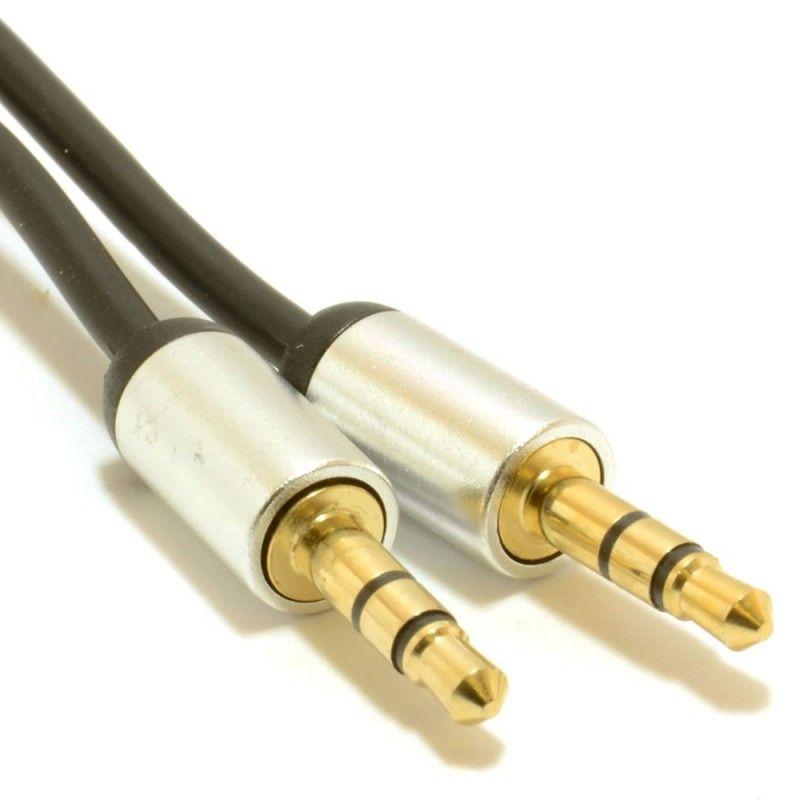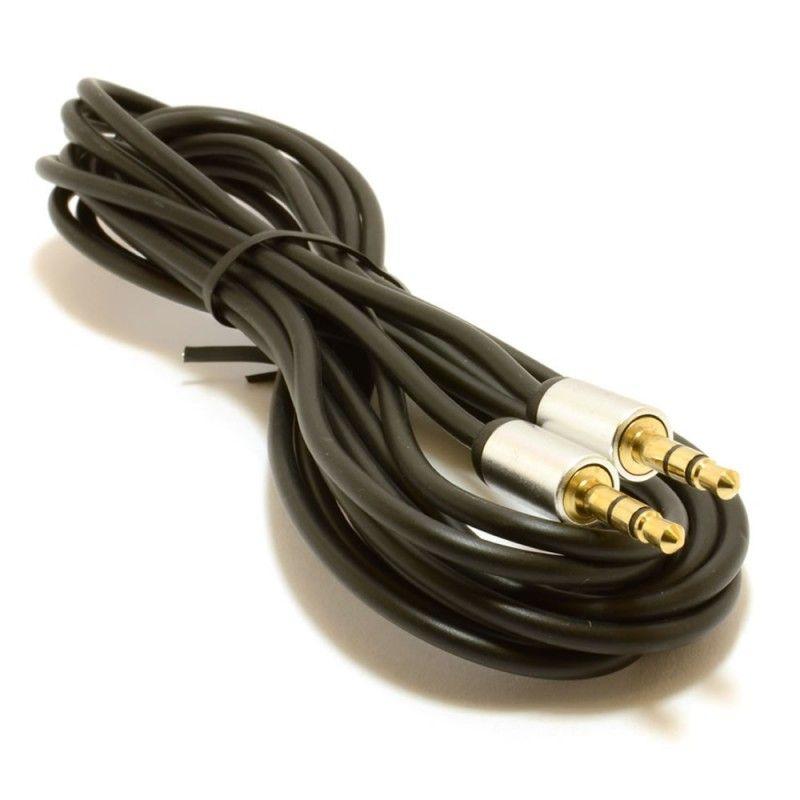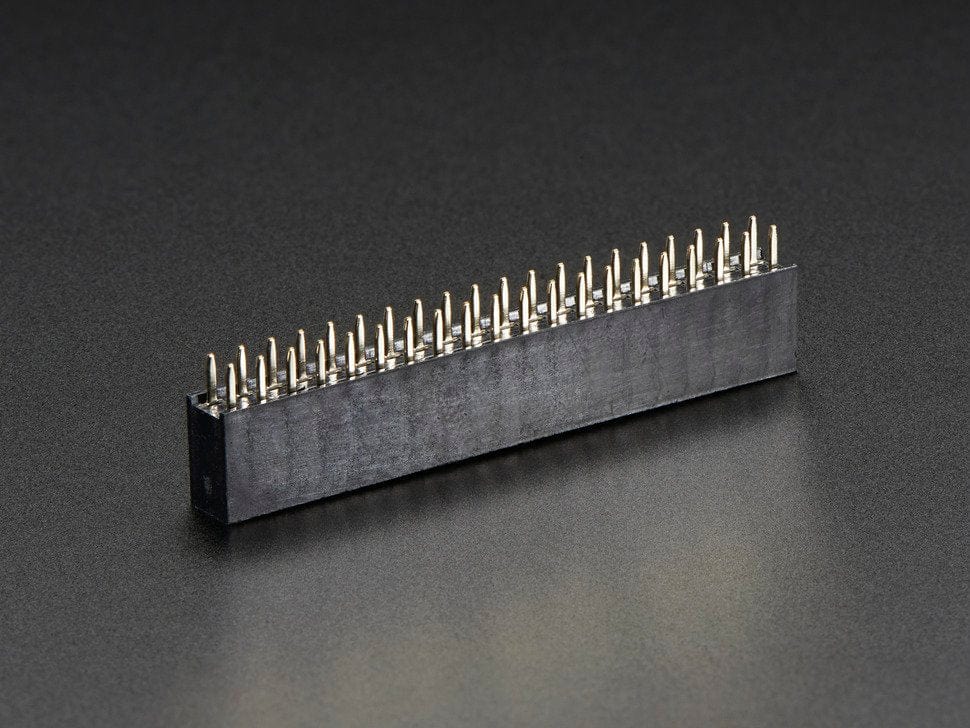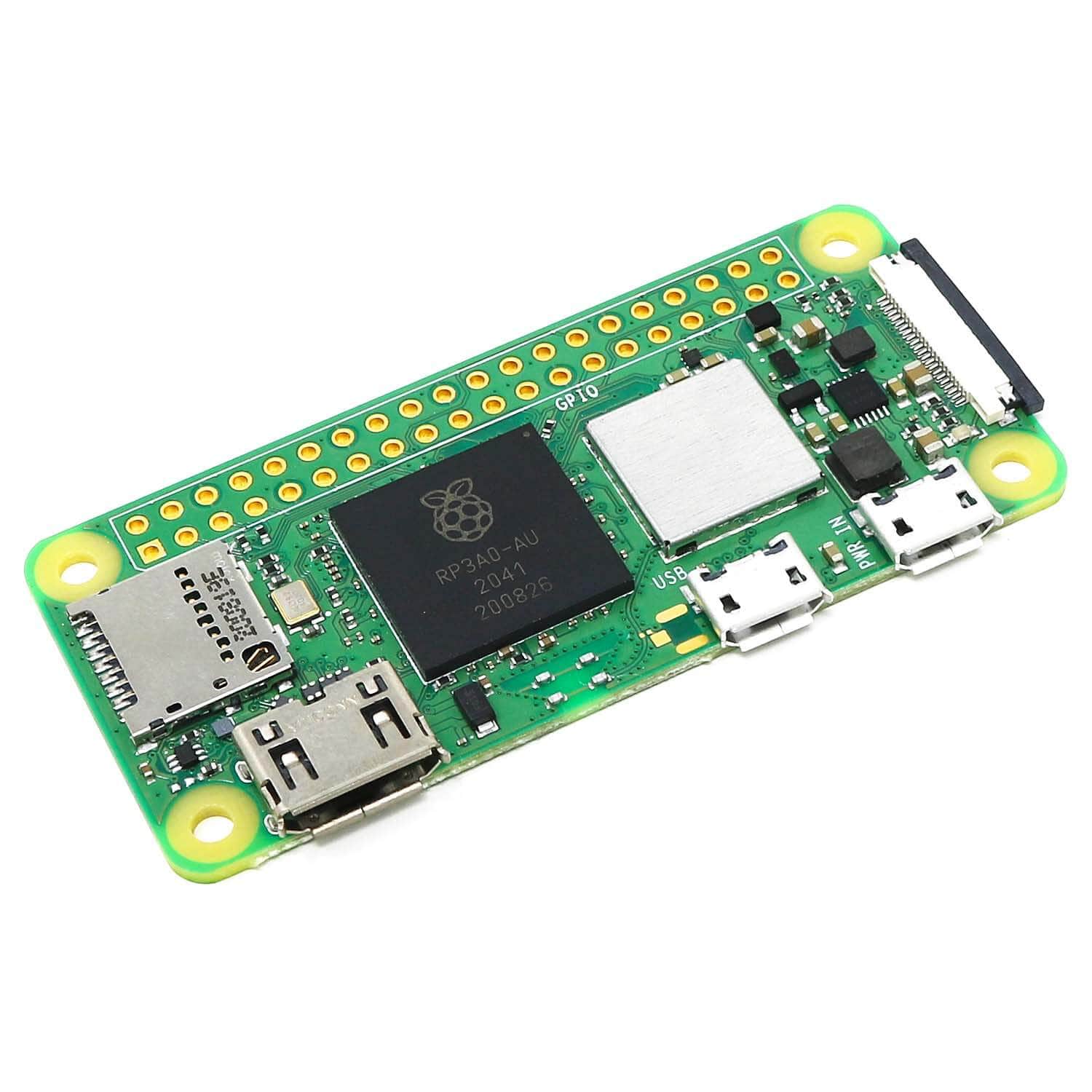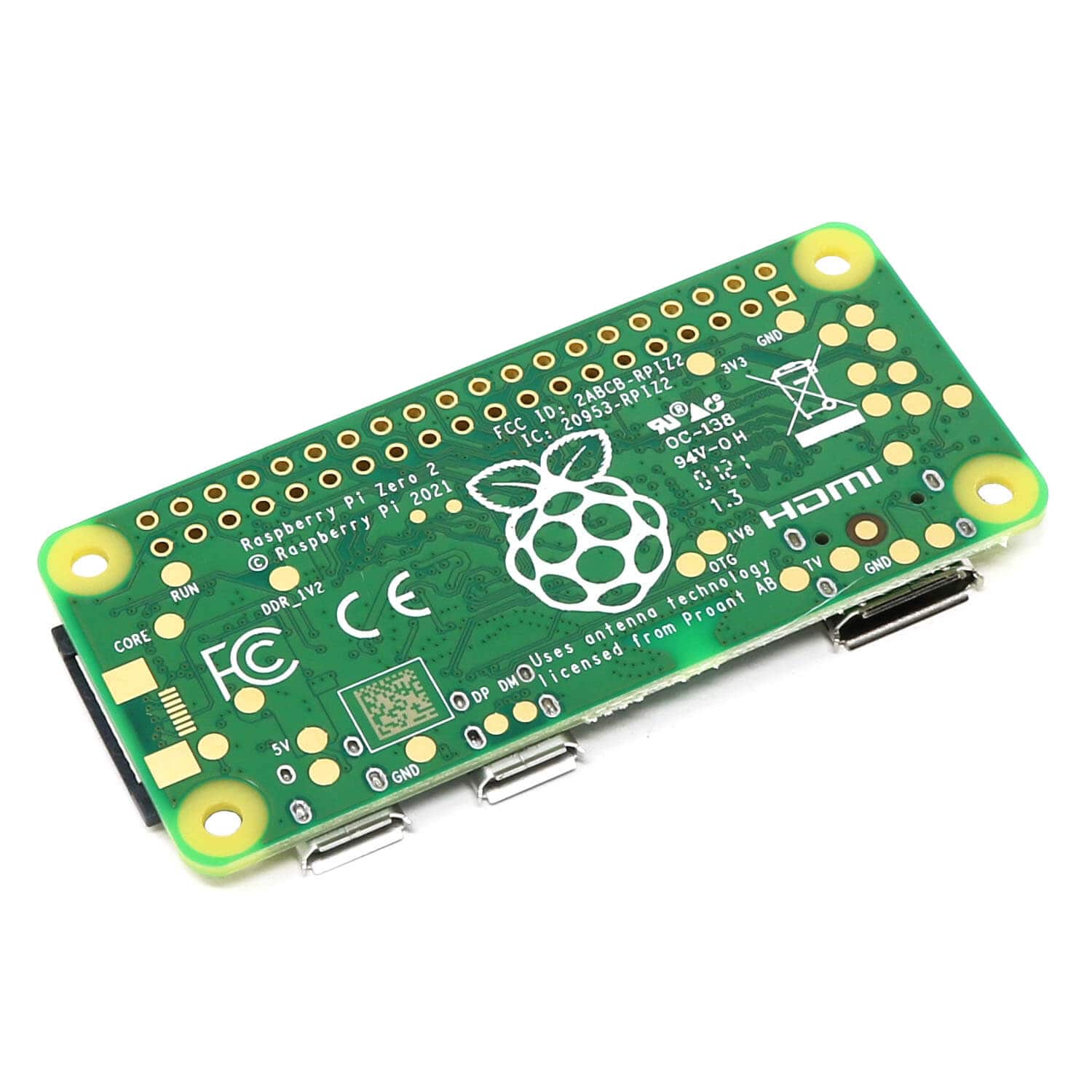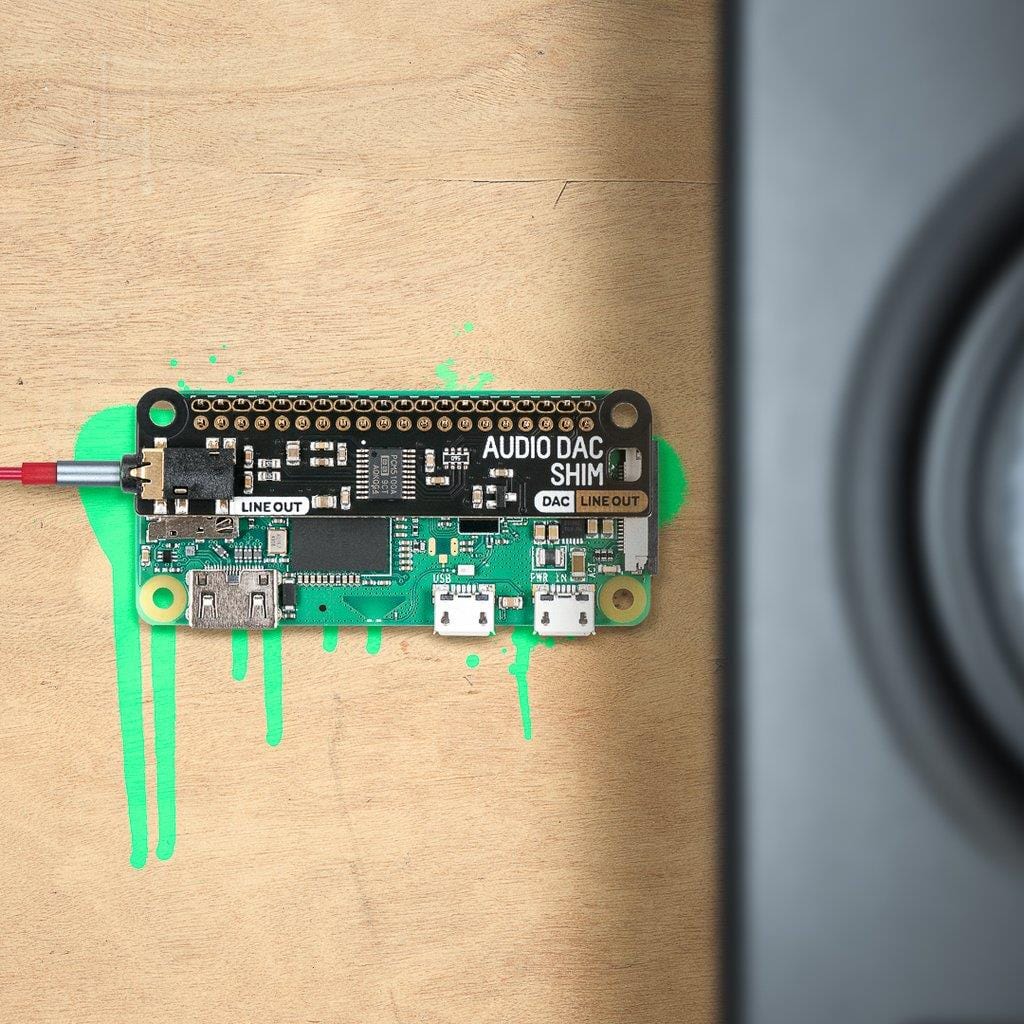
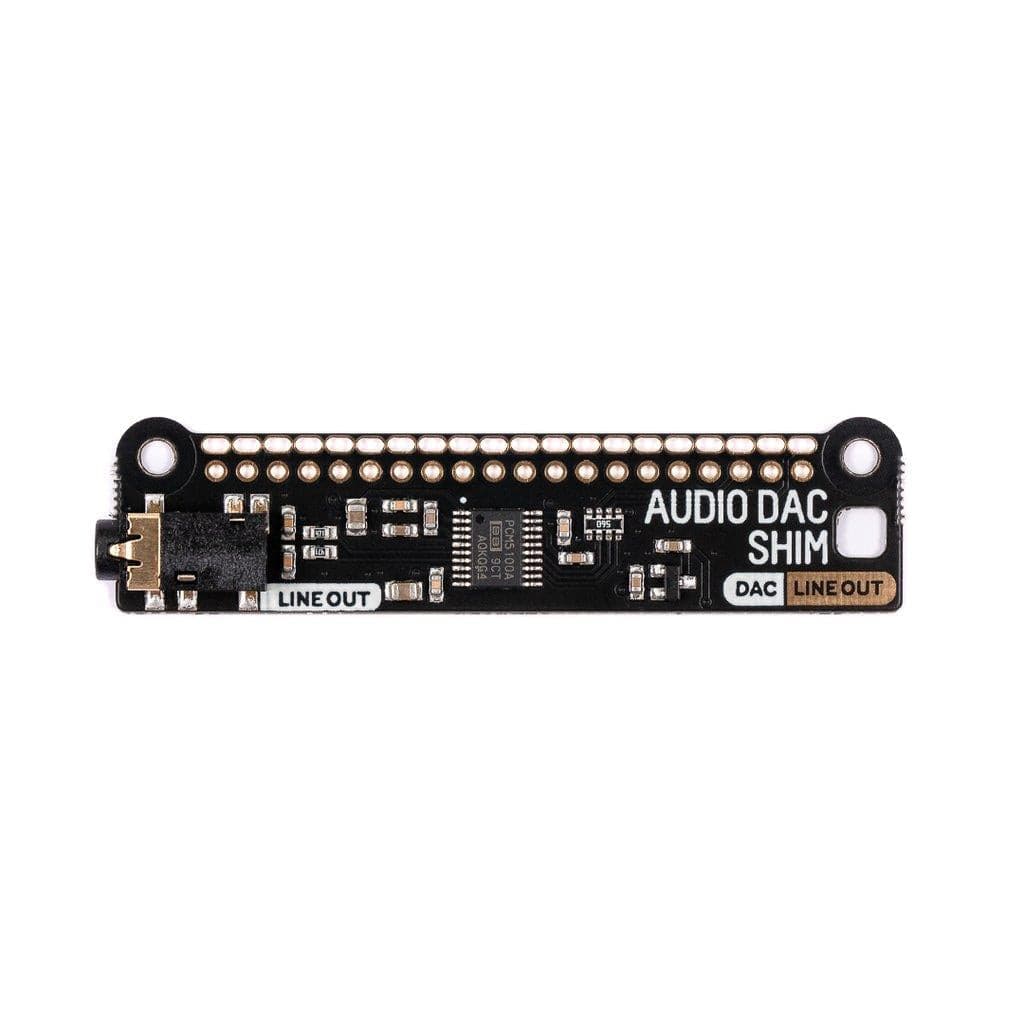
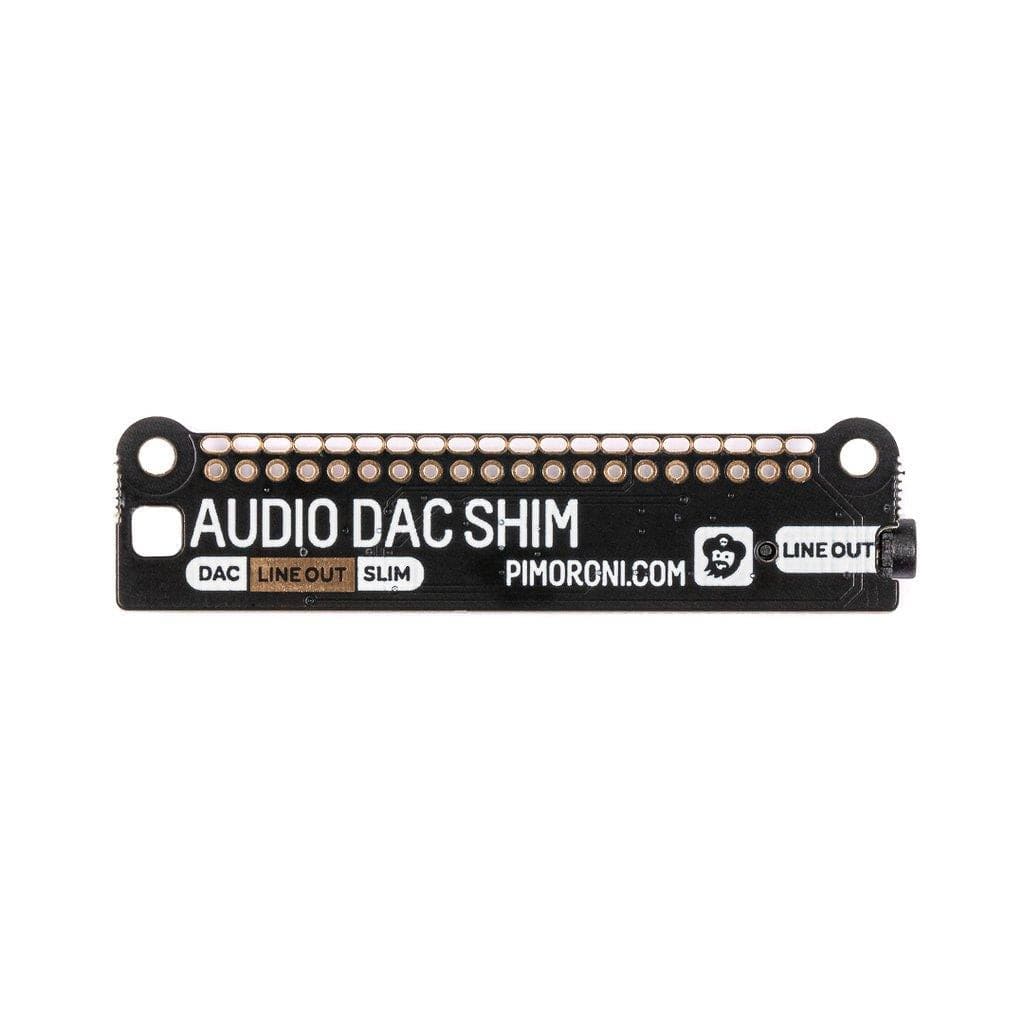
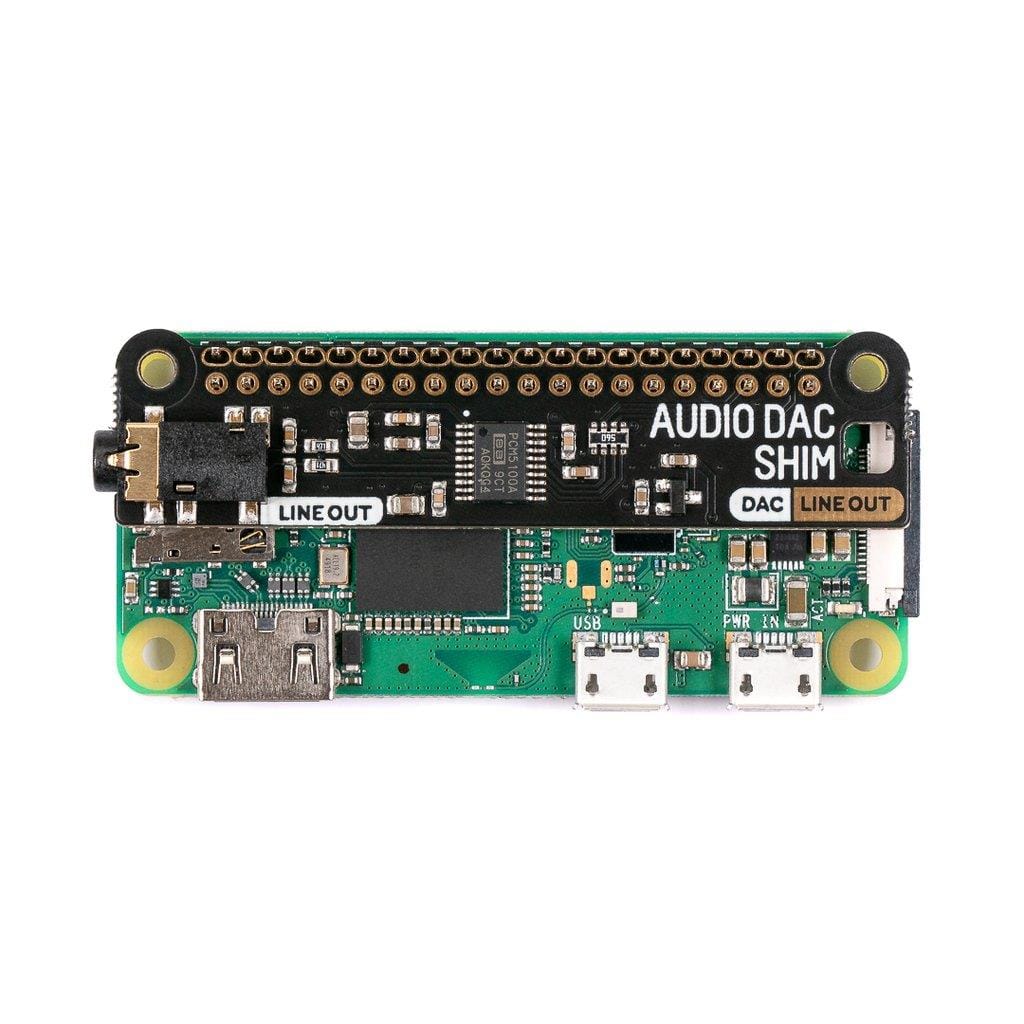
Login / Signup
Cart
Your cart is empty
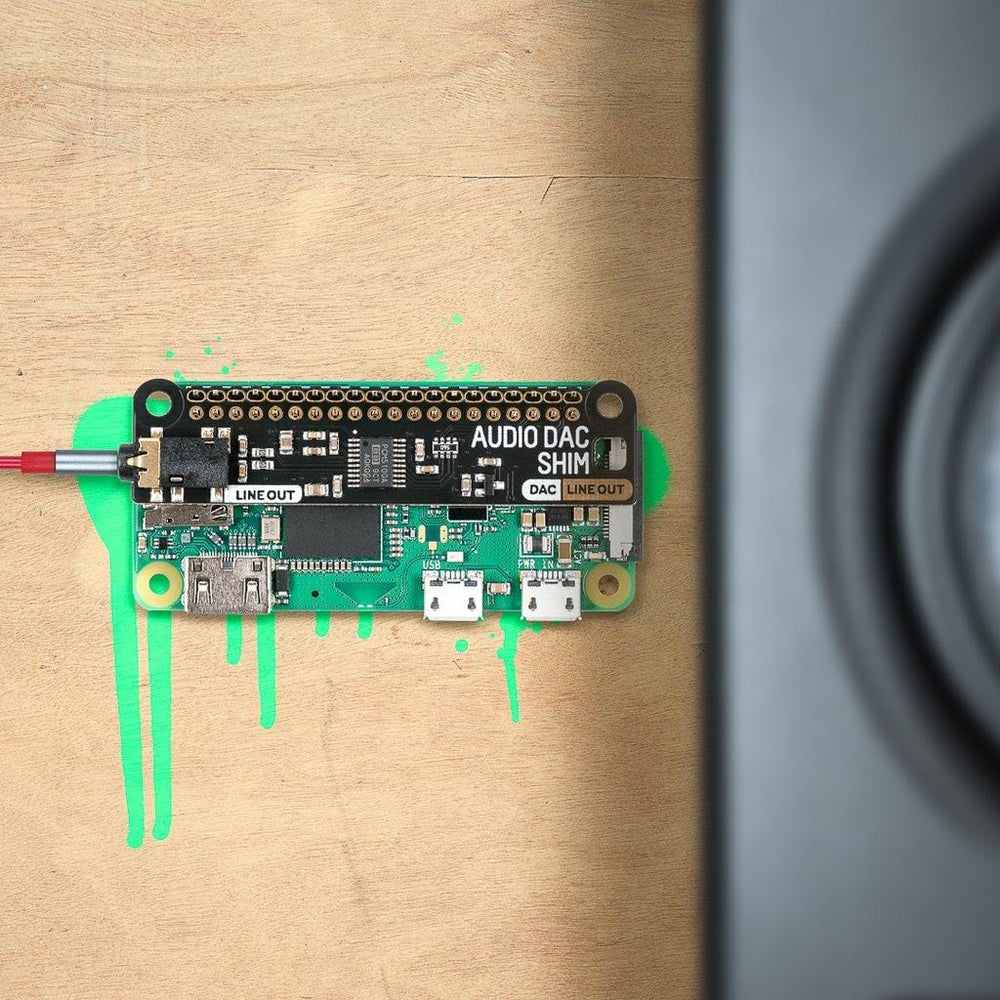
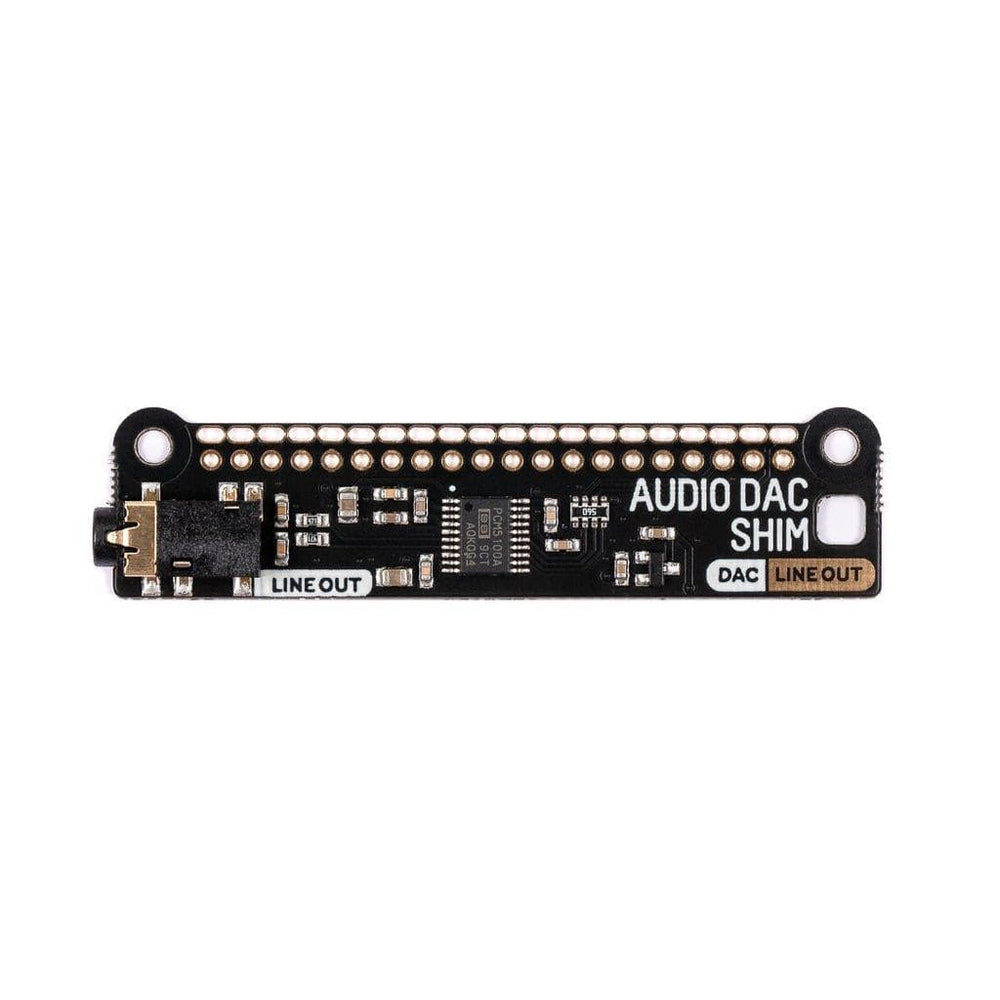

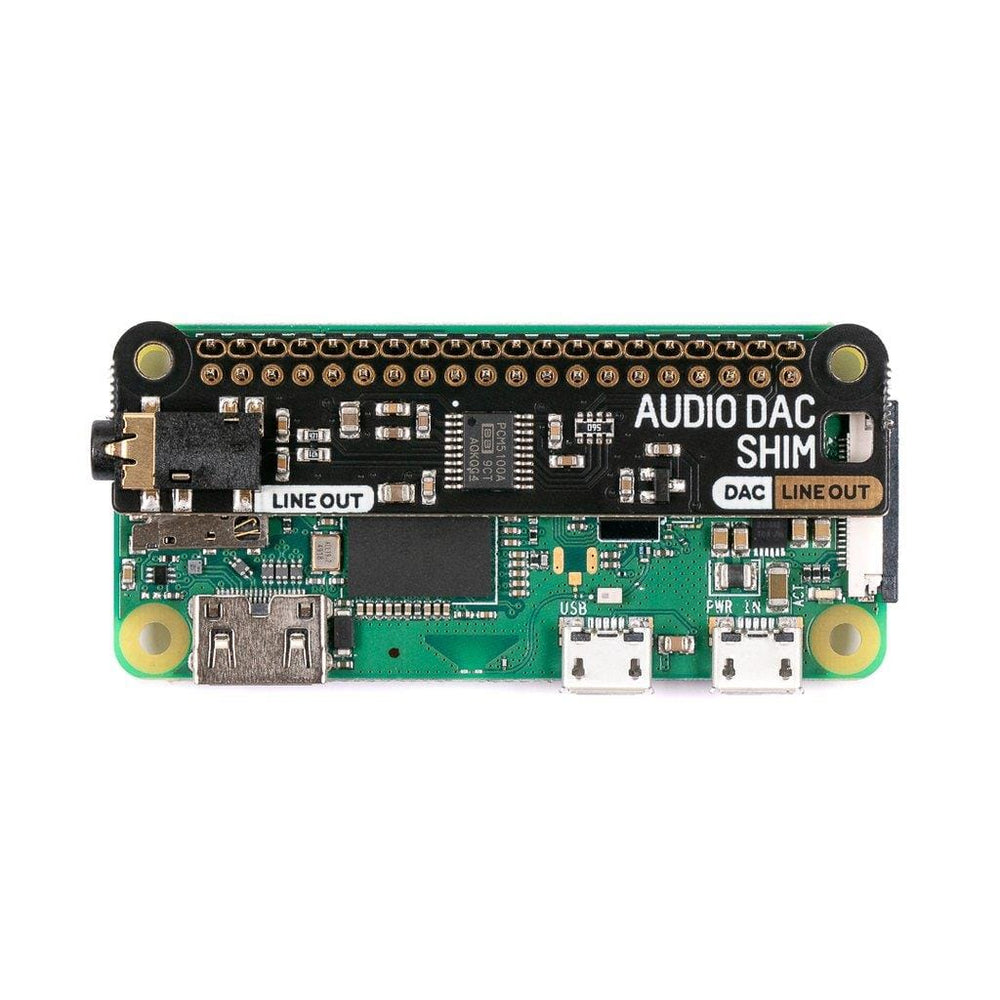
A super-simple, slimline way to hook up a hi-fi amp or powered speakers to your Raspberry Pi! Output punchy digital I2S audio whilst leaving your GPIO pins conveniently accessible.
SHIM is an old Yorkshire term meaning 'Shove Hardware In Middle' - we use it for our Raspberry Pi add-ons that are designed to be sandwiched between your Pi and a HAT or mini HAT. This one has a clever friction fit header which slips handily over your GPIO pins, requires zero soldering* and is easily removable.
The PCM5100A DAC chip takes high-quality digital audio from your Pi and pipes out crisp, line-level 24-bit / 192KHz stereo audio through the 3.5mm jack.
Because Audio DAC SHIM adds no extra bulk to your Pi it's perfect for fitting inside sleek cases or hiding inside hi-fis, media centres or radiograms - letting you play music or stream digital radio through that still perfectly good sound system. It's also a handy way to add an audio output to your Pi Zero or Pi 400!
Please note: a Raspberry Pi is not included with this board.
The easiest way to get everything set up is to to use our Pirate Audio software and installer which configures I2S audio and SPI, as well as installing Mopidy and our custom Pirate Audio plugins which will let you stream Spotify or play local files.
Here's how to get started:
git clone https://github.com/pimoroni/pirate-audiocd pirate-audio/mopidysudo ./install.sh
You can find more detailed instructions here: https://github.com/pimoroni/pirate-audio/tree/master/mopidy or get tons more info in our Getting Started with Pirate Audio tutorial.
Alternatively, if you'd rather not install all the Mopidy stuff, you can set Audio Amp SHIM as your default Alsa device in Raspberry Pi OS by adding the following lines to your /boot/config.txt file:
dtoverlay=hifiberry-dacgpio=25=op,dh
If you're using a Pi that has an audio jack you might also need to disable onboard audio by adding a # to the beginning of the following line (this can help applications find the correct audio device automatically):
#dtparam=audio=on





